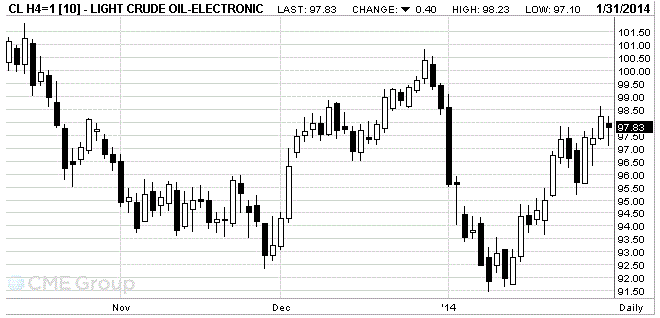- Oil: an overview of the market situation
Notícias do Mercado
Oil: an overview of the market situation
The price of oil fell today , closer to $ 107 per barrel (Brent) and $ 96 per barrel (WTI), which was due to concerns about the emerging economies and the planned reduction of monetary stimulus by the U.S. Federal Reserve. Add that oil prices are on the way to its first monthly drop since September.
Brent crude fell by 3.3 percent in January amidst the challenges in emerging markets , as well as the data presented, which showed that the fuel consumption from China grew at the slowest pace in more than 20 years in 2013. As for oil brand WTI, is due to severe weather conditions in the U.S. and improve the economy , prices are almost unchanged over the month .
I also add that trading volume today was less than usual , as some Asian markets closed due to the Lunar New Year holiday .
One report he presented today showed that OPEC oil production rose in January from December's 2.5 year low , due to the partial recovery in demand in Libya and increased supply from Iraq and Iran. Mining the average was at 29.940 million barrels a day , compared with the revised figure for December - 29.63 million per day.
Meanwhile, we note that the rise of the dollar also helps reduce oil prices. The dollar rose partly because of the U.S. GDP , which grew at an annualized rate of 3.2 percent in the final three months of last year. While the pace of growth slowed in the third quarter , the last increase was much larger than expected at the beginning of the quarter.
It is worth mentioning that the price difference between Brent crude and WTI fell below $ 10 a barrel on the basis of the closing price, which is fixed for the first time since early November 2013.
March futures price for U.S. light crude oil WTI (Light Sweet Crude Oil) fell to $ 97.83 a barrel on the New York Mercantile Exchange (NYMEX).
March futures price for North Sea Brent crude oil mixture fell by 80 cents to $ 106.90 a barrel on the London exchange ICE Futures Europe.
